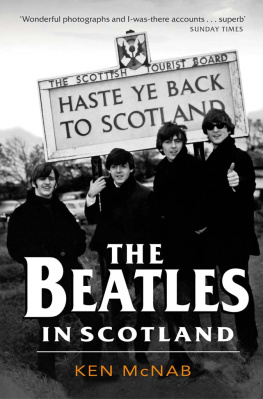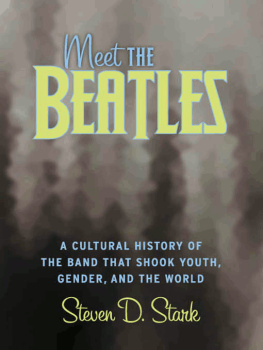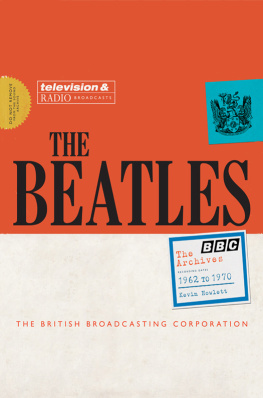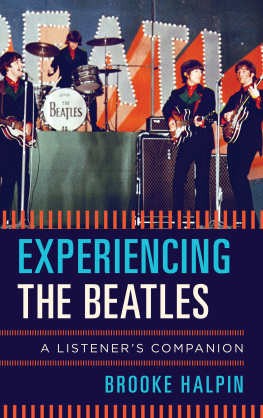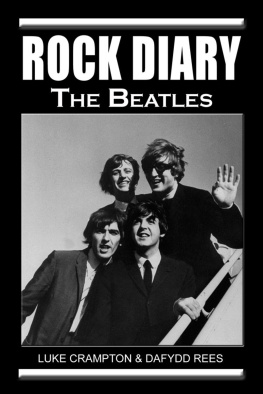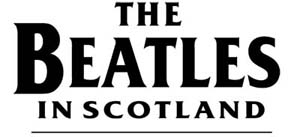

First published in 2008 by Polygon. This paperback edition
published in 2012 by Polygon, an imprint of Birlinn Ltd.
West Newington House
10 Newington Road
Edinburgh
EH9 1QS
www.polygonbooks.co.uk
Copyright Ken McNab 2008 and 2012
The moral right of Ken McNab to be identified as the author of this work has been asserted by him in accordance with the Copyright, Designs and Patents Act, 1988.
All rights reserved. No part of this publication may be reproduced, stored, or transmitted in any form, or by any means electronic, mechanical or photocopying, recording or otherwise, without the express written permission of the publisher.
ISBN 978 1 84697 238 6
eBook ISBN 978 0 85790 202 3
British Library Cataloguing-in-Publication Data
A catalogue record for this book is available on request from the British Library.
Typeset by Hewer Text UK Ltd, Edinburgh
Printed and bound by [to follow}
For the other half of the sky...
this book is dedicated to my wonderful wife Susanna
and our children, Jennifer and Christopher.
PREFACE
Im always getting asked: Why do you like the Beatles so much? Well, you know... songs that changed the world, the soundtrack of a generation, the special chemistry between these four guys, landmark albums such as Rubber Soul, Revolver, Sgt Pepper, Abbey Road...
But the truth is simple, really. The music makes me happy. And its been making me happy ever since, as a 14-year-old schoolboy in Glasgow, I first heard the 196266 compilation known as The Red Album. Now I am older, so much older than yesterday, my enthusiasm remains undimmed. The songs still make me happy. All of them.
From the raucous 1, 2, 3, 4 intro of I Saw Her Standing There to the mercurial brilliance of Strawberry Fields Forever to the elegiac genius of Let It Be; growing up, there was nothing like a Beatles song to track your mood through the pitted path from adolescence to adulthood.
Amazingly, this year marks the fiftieth anniversary of the release of Love Me Do, the bands first single. Who then could have foreseen the musical chain reaction that song would spark or the impact the Beatles would make on popular culture all over the world. Who then would have thought that, half a century later, the Beatles would still be the standard by which all bands are measured? What a legacy they left us!
Four years have passed since The Beatles in Scotland appeared in hardback, after my friend and Evening Times colleague Russell Leadbetter first suggested a book that explored the bands links to Scotland. It was great fun. I could never have believed how well the book would be received within the Beatles community and for that I am extremely grateful. I also owe a debt of thanks to those attentive fans who pointed out the need for some minor clarifications in the original text. I am also grateful to Polygon for giving me the opportunity to become a fully-fledged paperback writer with the publication of this updated revision.
The seeds of the original book were sown once upon a time a long ago, but I think its worth recalling the embryonic process by which the book came to be born.
I knew John Lennons cousin Stan Parkes lived in Largs, in Ayrshire, and I went to see him as a first point of contact. It was purely exploratory. I expected nothing except to shake the hand that shook the hand of the late great Johnny Ace. Stan, though, was warm and welcoming, and regaled me with tales of the mischievous kid who spent his summer holidays in the Highlands. Then of course there were the numerous trips north when his band became quite well known. Not forgetting the car crash outside Tongue, Sutherland that saw him spend a week in a cottage hospital.
By the time I got back home, the sapling was beginning to take root in my mind. As well as Johns links to Durness, Paul McCartneys connections to Argyll run deeper than a simple song in homage to the Mull of Kintyre.
Then there was the Silver Beetles first tour, a tour that started in Alloa three long years before the first scream of Beatlemania was heard. And, of course, there were the Scottish concerts that took place when the tidal wave of Beatlemania crashed upon the rocks of popular culture. Who saw them in places like Alloa? What did they remember? Was the hysteria for real or an urban myth? Were they any good?
And what about all those Scots who stood out so prominently in the circle of famous friends of John, Paul, George and Ringo people like Donovan, Lulu, Sir Jackie Stewart, Davey Johnstone, Hamish Stuart. And has time simply airbrushed away the fact that one of the original Beatles was, in fact, a Scot? Hang on... getting ahead of myself a bit here.
But in that hours drive to Glasgow, I came to realise the Beatles loved Scotland and the evidence was all there. What I was unprepared for was just how astonishing that evidence would turn out to be.
This was always a labour of love, consummated by the joy of talking to so many people who have had some connection to the Beatles in Scotland. These days are past now, and in the past they must remain. But I hope this book will rekindle some joyous memories for those who can truly say: We were there. And for the rest of you, it may open a page to an era that brought us some of the best music in modern times. Music that makes me happy.
The Beatles long ago passed the audition. I hope Ive managed to do the same.
Special thanks remain to the following people in the without-whom department: Stan and Jan Parkes; Russell Leadbetter; Ronnie Anderson at the Sunday Mail picture desk; the Daily Record library staff; the Evening Times picture desk, especially Grace; Kerry Black at the Scotsman picture library; Bill McLoughlin at DC Thomson; George Burton; Derek Yeaman; Fraser Watson; Donovan; Johnny Gentle; Gavin Askew; Lulu; Iain Leckie; Hamish Stuart; Pete Nash; the British Beatles Fan Club; Sir Jackie Stewart; Davey Johnstone; Richard Park; Len Murray; Linda Thompson; Andy White; Barbara Dickson; the guys in Marmalade, the Campbeltown Pipe Band; Paul Young; all the people I spoke to who saw the band back in the day; brother Ian; Bridget and Kieran; Caroline and Allan; Linda and Kieran; Jacqueline and Ronnie; Terrance and Anne-Marie; Drew and Maureen; Isabel, Gail, Keith and all the Broons; Sen Costello; Neville Moir at Polygon; my agent Mark Stanton; mum and dad. And, of course, John, Paul, George and Ringo.
Ken McNab
Autumn 2012
DURNESS
September 1979. Dawn. Hong Kong harbour. The first crimson streaks of a new day break the sky with colour. No one gives the stranger gazing out over the junks and sampans a second glance. Yet there is an air of familiarity about him, a faint echo of memory. His long hair is swept back in a ponytail and a large bushy beard frames his face. In profile, his distinct aquiline nose looks almost aristocratic. Hes wearing a long coat, a fedora and white tennis shoes. Between his fingers smoulders the ever-present Gitanes, held at its familiar rakish angle.
John Lennons eyes were fixed on the famous shipping lanes, the soft breeze washing over his face and the smell of the sea in his nostrils. Behind him, the giant peak of Mount Victoria towered above the oriental skyline. But John was 6,000 miles away from here. In a time before fame. Before money. Before the mania. Before the Beatles. In his minds eye, John was about 11 and running through the rugged countryside of Sutherland in the far north of Scotland with his older cousin, Stan Parkes. Summer holidays were always spent at his Aunt Maters seven-acre croft in the village of Durness, the most northerly village on this gnarled but beautiful coastline. Together the two boys would comb the beaches looking for shells, build dykes, fish for salmon, draw the odd sketch and chat away to the local crofters.
Next page
